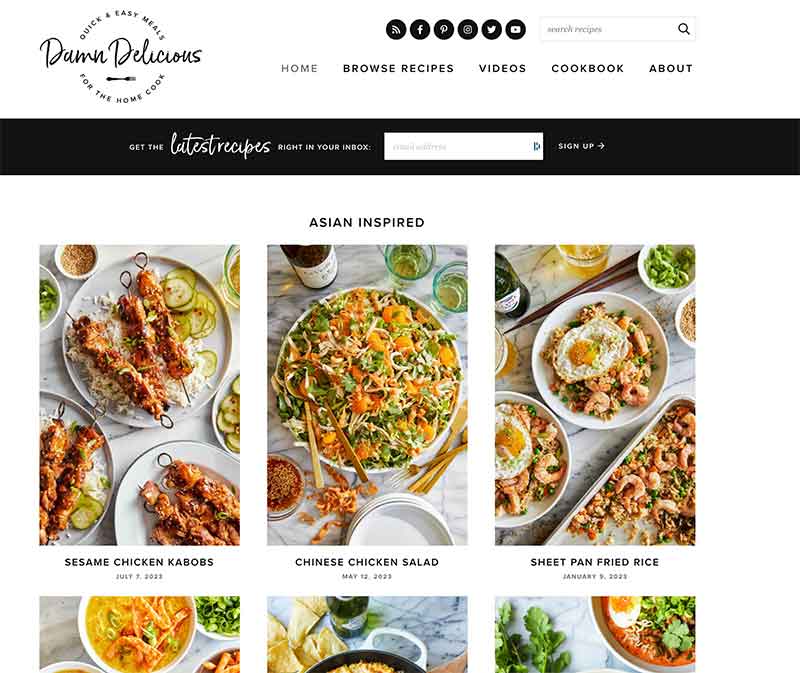Jose Mier scours the Internet for the most delicious recipes. He recently happened on Damn Delicious whose creator, Chengun, serves up a bounty of Asian recipes including Kung Pao Chicken.
Kung Pao Chicken, originating from the Sichuan province of China, is a dish that has captivated taste buds around the world with its bold and harmonious blend of flavors. Named after Ding Baozhen, a Qing Dynasty official with the title Kung Pao, this iconic dish has a rich history that dates back centuries. Its journey from the heart of Sichuan to international recognition reflects the universal appeal of its delectable combination of sweet, spicy, and savory elements.
Historical Roots and Culinary Evolution
The roots of Kung Pao Chicken can be traced back to the vibrant culinary landscape of Sichuan, known for its bold and spicy flavors. Ding Baozhen, honored with the title Kung Pao, is said to have been a gourmet who enjoyed spicy dishes, and it is in his name that this iconic dish was created. Legend has it that the original Kung Pao Chicken featured diced chicken, peanuts, and chili peppers, stir-fried to perfection in a flavorful sauce.
Sichuan cuisine, characterized by its use of Sichuan peppercorns and a variety of bold spices, played a significant role in shaping the flavors of Kung Pao Chicken. The dish exemplifies the region’s culinary philosophy of balancing the five essential flavors: sweet, sour, bitter, salty, and umami. The liberal use of chili peppers and Sichuan peppercorns imparts a distinctive heat and numbing sensation that elevates Kung Pao Chicken to a culinary masterpiece.
As the dish gained popularity within China, it eventually made its way onto the international stage. Chinese immigrants, bringing their culinary traditions with them, introduced Kung Pao Chicken to different parts of the world. The dish underwent adaptations to suit local tastes while retaining its core elements, making it a versatile and globally appreciated dish.
The Symphony of Flavors in Kung Pao Chicken
At the heart of Kung Pao Chicken lies the unique combination of flavors that dance on the palate, creating a symphony of taste sensations. The dish typically features bite-sized pieces of chicken, stir-fried to perfection, accompanied by a medley of ingredients that contribute to its distinctive profile.
The Kung Pao sauce is a key element in achieving the complex flavor profile of the dish. This sauce is a harmonious blend of soy sauce, vinegar, sugar, and Sichuan peppercorns. The soy sauce adds a salty umami richness, while the vinegar provides a subtle tanginess that balances the sweetness of the sugar. The inclusion of Sichuan peppercorns not only imparts heat but also contributes a unique numbing sensation, characteristic of Sichuan cuisine.
Chili peppers, a staple in Sichuan cooking, play a crucial role in giving Kung Pao Chicken its signature spiciness. The level of heat can be adjusted to suit individual preferences, making the dish adaptable to various spice tolerances. Peanuts provide a delightful crunch and a touch of earthiness, while diced vegetables such as bell peppers or zucchini contribute freshness and color to the ensemble.
The combination of these elements creates a dish that is both bold and balanced, with each ingredient playing a distinct role in the overall flavor profile. The symphony of sweet, spicy, and savory notes in Kung Pao Chicken is a testament to the culinary expertise of the Sichuan region.

The Recipe: Kung Pao Chicken
Ingredients:
- 1 lb boneless, skinless chicken breasts, diced into bite-sized pieces
- 1 cup roasted peanuts
- 1 cup diced bell peppers (red or green)
- 1 cup diced zucchini
- 4-5 dried red chili peppers
- 3 cloves garlic, minced
- 1 tablespoon ginger, minced
- 2 green onions, chopped (for garnish)
For the Kung Pao Sauce:
- 3 tablespoons soy sauce
- 2 tablespoons rice vinegar
- 1 tablespoon sugar
- 1 teaspoon Sichuan peppercorns, toasted and ground
- 2 tablespoons vegetable oil (for cooking)
Instructions:
- Prepare the Kung Pao Sauce: In a small bowl, whisk together soy sauce, rice vinegar, sugar, and ground Sichuan peppercorns. Set aside.
- Preheat the Wok or Skillet: Heat vegetable oil in a wok or large skillet over medium-high heat.
- Stir-Fry the Chicken: Add the diced chicken to the hot wok and stir-fry until it is cooked through and slightly browned. Remove the chicken from the wok and set it aside.
- Cook the Vegetables: In the same wok, add a bit more oil if needed, and stir-fry the minced garlic, ginger, dried red chili peppers, bell peppers, and zucchini until they are just tender.
- Combine and Add Sauce: Return the cooked chicken to the wok. Pour the prepared Kung Pao sauce over the chicken and vegetables. Stir everything together until well-coated and heated through.
- Add Peanuts: Toss in the roasted peanuts and stir to distribute them evenly throughout the dish.
- Garnish and Serve: Sprinkle chopped green onions over the top for garnish. Serve the Kung Pao Chicken over steamed rice or noodles.
This recipe serves as a delicious introduction to the art of preparing Kung Pao Chicken at home, allowing enthusiasts to experience the symphony of flavors that define this iconic dish.
Conclusion
Kung Pao Chicken, with its roots deeply embedded in the culinary heritage of Sichuan, has evolved into a global sensation, enchanting food lovers with its bold and balanced flavors. The dish’s ability to adapt to different cultural contexts while retaining its essential character speaks to its timeless appeal. Whether enjoyed in a traditional Sichuan eatery or prepared at home using a carefully crafted recipe, Kung Pao Chicken remains a culinary masterpiece that continues to unite people through a shared appreciation for exquisite flavors and cultural richness.